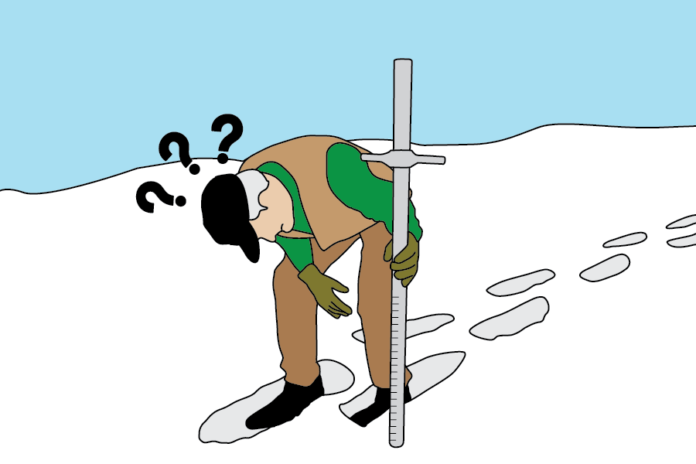Experts say that the effects of climate change are impacting mountain lake ecosystems
By RACHEL SHEY — city@theaggie.org
The Sierra Nevada snowpack is one important source of water in California. This year, it’s melting much earlier than usual. Only a small amount of snow fell this past winter, and now this meager snowfall is melting much earlier than it typically would, according to Central Sierra Snow Laboratory Lead Scientist Andrew Schwartz.
“We are currently sitting at about 27% of what we would normally have at this point in time,” Schwartz said of the snow levels around the laboratory in Soda Springs. “We have about one to two feet at absolute most, and it is melting incredibly fast.”
Scientists determine the level of the snowpack by heading out in teams to determine the snow level. By comparing the snow depth and the snow water equivalent, scientists can predict whether it will be a drought summer.
“Throughout California, there’s about 265 snow courses, where people go out with big hollow tubes and push them into the snowpack,” Schwartz said. “Once a month, from February through May, teams go out and measure those courses and compare them to previous years. A lot of those records go back to the 1920s and 1930s, and some even go back to the 1910s.”
Another technology that’s been used to find out snow levels in a more comprehensive manner is an airborne snow observatory, which makes use of Light Detection and Ranging (LIDAR). Using these observatories, scientists fly over an area both when the ground is bare and after a snowfall and compare the two measurements to determine snowpack levels.
“Recently, there’s been a new project called the Airborne Snow Observatory, that flies over very large areas, what we call catchments, where all the water flows into one river or stream,” Schwartz said. “They go out with this airplane with LIDAR and fly these catchments to get a better, more comprehensive view of snowpack that they can compare to previous years.”
UC Davis Postdoctoral Fellow Adrianne Smits explained that the early snowmelt is causing changes in Sierran mountain lakes and is altering the water temperature. Because the mountain lakes are poorly understood, it’s unclear exactly how they will be affected. However, mountain lakes around the world are changing in similar ways, thanks to climate change.
“When you get a really low snowpack, you also end up getting an early melt, and you tend to get really warm water temperatures in the summer,” Smits said. “You also tend to get higher algal productivity in lakes. We tend to think of all these beautiful, clear, pristine mountain lakes, but what we’re seeing is that, in these dry years with less snow, water clarity is going down. We’re seeing more algal growth.”
Not all of these changes are necessarily bad. The greater algal growth can lead to the lakes becoming more productive. Historically, the lakes have been very cold, which has rendered them incapable of supporting a large ecosystem.
“It’s not necessarily going to be the same species that are there now that will be contributing to higher productivity,” Smits said. “We’re definitely also seeing a bit of a change in terms of where productivity is happening in the lakes. We’re seeing more attached algal growth, these thick, filamentous algal blooms, and that’s not really the same historical algal community that was there.”
The historical algal community which flourished in these mountain lakes was typically composed of a clear slime made up of mostly diatoms that coated the rocks and substrate. Despite being lesser in quantity than the new algal blooms, the slime was more nutritious, according to Smits.
“The filamentous algae, it’s not actually just happening in Sierra Nevada lakes,” Smits said. “It’s something we’ve noticed in lakes globally that historically had extremely clear water and pristine. They’re starting to show more of these big algal blooms along the shoreline, so it’s actually kind of a global phenomenon. One issue associated with them is that they can be less nutritious for other organisms in the lake.”
These mountain lakes used to lack fish. They were typically rich in amphibians until people introduced trout, which formed stable communities and outcompeted some amphibian species, which are now endangered.
“These lakes used to support a lot of amphibians, like the now-endangered mountain yellow legged frog, which used to be the most abundant animal in these lakes,” Smits said. “Trout were introduced to the majority of Sierran lakes, and that caused a pretty serious decline in amphibians. A lot of these lakes also support garter snakes, insects and invertebrates that are actually really important food for things like birds and bats.”
Written by: Rachel Shey — city@theaggie.org




